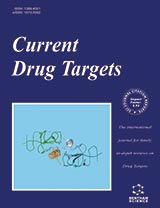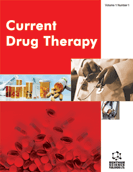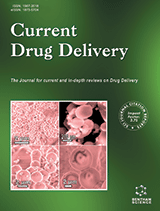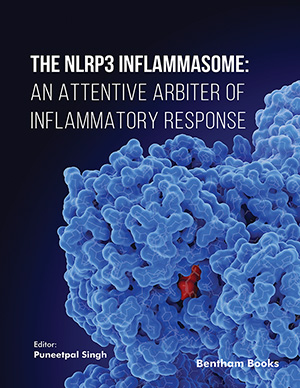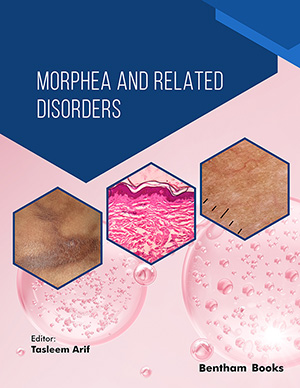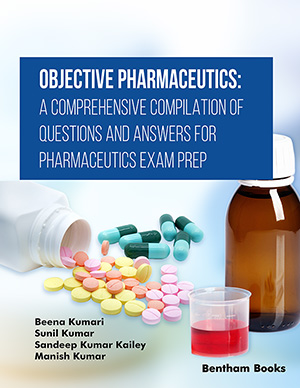Abstract
Inhibition of the proinflammatory cytokine TNF-α has been shown to be an effective strategy for treating inflammatory dermatoses. Etanercept competitively inhibits the interaction of TNF, interrupting the proinflammatory cytokine cascade and preventing TNF mediated cellular responses. The success of etanercept in a wide range of dermatologic conditions especially in psoriasis gives a new hope in dermatological therapy field. This article reviews the pharmacokinetic properties, safety profile, administration route and efficacy in different dermatological conditions of etanercept.
Keywords: tumour necrosis factor aplha, Cytokines, TNF inhibitors, Psoriasis, Inflammatory Diseases
Anti-Inflammatory & Anti-Allergy Agents in Medicinal Chemistry
Title: Etanercept for the Treatment of Dermatological Diseases
Volume: 6 Issue: 3
Author(s): Goksun Karaman
Affiliation:
Keywords: tumour necrosis factor aplha, Cytokines, TNF inhibitors, Psoriasis, Inflammatory Diseases
Abstract: Inhibition of the proinflammatory cytokine TNF-α has been shown to be an effective strategy for treating inflammatory dermatoses. Etanercept competitively inhibits the interaction of TNF, interrupting the proinflammatory cytokine cascade and preventing TNF mediated cellular responses. The success of etanercept in a wide range of dermatologic conditions especially in psoriasis gives a new hope in dermatological therapy field. This article reviews the pharmacokinetic properties, safety profile, administration route and efficacy in different dermatological conditions of etanercept.
Export Options
About this article
Cite this article as:
Goksun Karaman , Etanercept for the Treatment of Dermatological Diseases, Anti-Inflammatory & Anti-Allergy Agents in Medicinal Chemistry 2007; 6 (3) . https://dx.doi.org/10.2174/187152307781368256
| DOI https://dx.doi.org/10.2174/187152307781368256 |
Print ISSN 1871-5230 |
| Publisher Name Bentham Science Publisher |
Online ISSN 1875-614X |
 8
8
- Author Guidelines
- Graphical Abstracts
- Fabricating and Stating False Information
- Research Misconduct
- Post Publication Discussions and Corrections
- Publishing Ethics and Rectitude
- Increase Visibility of Your Article
- Archiving Policies
- Peer Review Workflow
- Order Your Article Before Print
- Promote Your Article
- Manuscript Transfer Facility
- Editorial Policies
- Allegations from Whistleblowers
Related Articles
-
Synthesis, Docking and Anti-Tumor Activity of β-L-1,3-Thiazolidine Pyrimidine Nucleoside Analogues
Medicinal Chemistry Gene Polymorphisms and Pharmacogenetics in Rheumatoid Arthritis
Current Genomics A Review of Depsipeptide and Other Histone Deacetylase Inhibitors in Clinical Trials
Current Pharmaceutical Design Mechanism and Treatment of Rituximab Resistance in Diffuse Large Bcell Lymphoma
Current Cancer Drug Targets Current Status of Thalidomide and CC-5013 in the Treatment of Metastatic Prostate Cancer
Anti-Cancer Agents in Medicinal Chemistry Anticancer Chemodiversity of Ranunculaceae Medicinal Plants: Molecular Mechanisms and Functions
Current Genomics Roles of Epithelial-Mesenchymal Transition in Cancer Drug Resistance
Current Cancer Drug Targets A Possible Approach for Stem Cell Gene Therapy of Fanconi Anemia
Current Gene Therapy Targeting Hsp90 in Non-Cancerous Maladies
Current Topics in Medicinal Chemistry Thromboembolic Events in Patients Treated with Anti-Angiogenic Drugs
Current Vascular Pharmacology MicroRNAs in Lung Cancer and Lung Cancer Bone Metastases: Biomarkers for Early Diagnosis and Targets for Treatment
Recent Patents on Anti-Cancer Drug Discovery New Developments of Differentiation Therapy of Acute Myeloid Leukemia
Current Pharmacogenomics and Personalized Medicine Graphical Abstracts:
Current Angiogenesis (Discontinued) Molecular Targeted Approaches to Cancer Therapy and Prevention Using Chalcones
Current Cancer Drug Targets Marine Sponges: Potential Sources of New Antimicrobial Drugs
Current Pharmaceutical Biotechnology Redox-active and Redox-silent Compounds: Synergistic Therapeutics in Cancer
Current Medicinal Chemistry Prospects and Limitations of T Cell Receptor Gene Therapy
Current Gene Therapy Emerging Concepts on Inhibitors of Indoleamine 2,3-Dioxygenase in Rheumatic Diseases
Current Medicinal Chemistry Pain Management in Hematological Patients with Major Organ Dysfunctions and Comorbid Illnesses
Cardiovascular & Hematological Agents in Medicinal Chemistry Manipulation of the Immune System for Cancer Defeat: A Focus on the T Cell Inhibitory Checkpoint Molecules
Current Medicinal Chemistry














